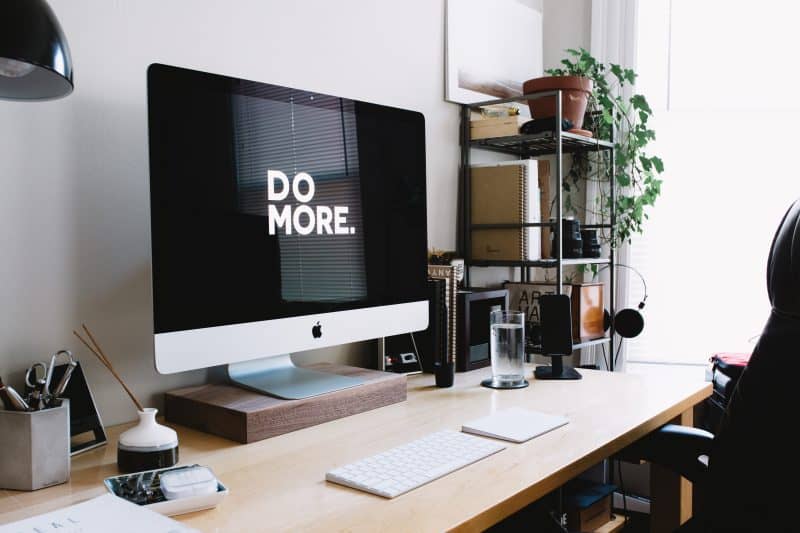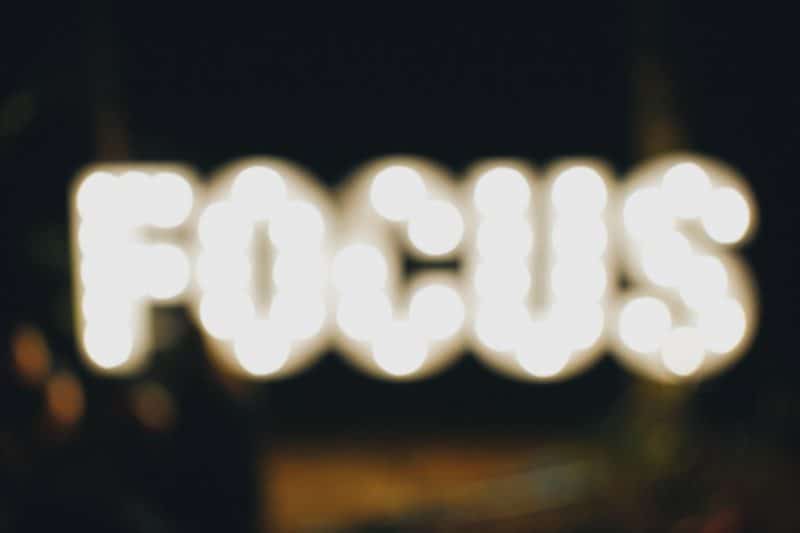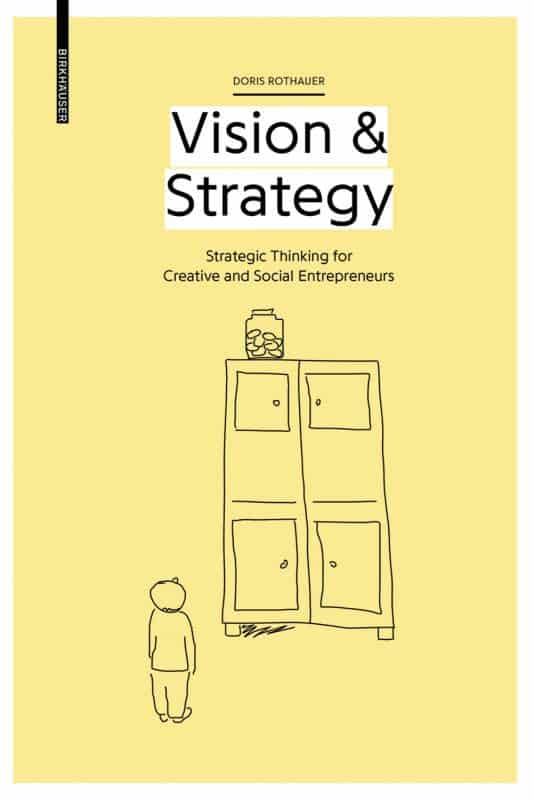10 Strategy Hacks for Creative and Social Entrepreneurs
In a profit-driven world the term strategy has become one of the most used empty words. But strategy should be a creative and meaningful process that helps us design a sustainable future based on clear visions, values and attitudes.
This post is an extract from Doris Rothauer’s book Vision & Strategy: Strategic Thinking for Creative and Social Entrepreneurs, published in English by Birkhäuser in March 2018.
Working with creative and social entrepreneurs as a strategy consultant and coach, I often experience the lack of strategic thinking and so a lot of creative energy is wasted without leading to success. The way is the goal, or the journey is the reward – sayings attributed to Confucius –, and strategy means designing this journey deliberately. Here are 10 tips to help you develop a strategic mindset.
1. Be Future-Oriented
Despite having all the perspectives in mind, your focus should be forward-looking and future-oriented. One reason is your vision, and your goal to manifest your vision, step by step, so that it becomes a reality. Being future-oriented means being visionary. And successful strategies follow visions.
Another reason is the condition of our world that is continuously changing. It’s the engine for development, the purpose of being innovative. Businesses who only rely on success stories of the past and don’t move ahead are at risk.
The same applies to problem-solving. The way problems were solved in the past might not work any longer in the future. To foster development and innovation, you need to be future-oriented. A quote from the Canadian ice hockey legend Wayne Gretzky puts it in a nutshell: “Skate to where the puck is going to be, not where it has been.”
My Tip
Be curious, be attentive! Observe your scene, your colleagues, the news, social media, conferences, literature, art and other influential and inspiring sources of interest. What are the drivers of change? Particularly creative and social entrepreneurs have an intuitive feeling for future needs and trends. Make this a core competence.
“Life can only be understood backwards; but it must be lived forwards”
2. Be Impact-Oriented
In a world that is drastically confronted with inequality and exploitation of resources we need to reconsider our economic strategies and the way we work together. So far, business models have been profit-driven, mainly focusing on an ever-growing output, but not on the outcome – that is the impact the output has on the organization, the target groups, on society in general.
Creative and social entrepreneurs mostly have a different motivation and approach. They want to create some sort of impact with their work, they want to change something for the better, change people’s awareness, values and attitudes, thinking and acting. They are generally impact-oriented. Remember: the best strategies are visions. But also: the best strategies are impact strategies!
My Tip
The social entrepreneurship movement has developed tools and methods how to create impact business models, how to evaluate the impact and how to scale and transfer the impact. They help you create sustainable, impactful strategies.
3. Build on Your Values, Strengths and Competencies
20th century management theory has developed two different approaches to strategy: the market-based view and the resource-based view. The market based view is, as the name proposes, based on the market: The success of a business is determined by external factors, that is by the customers and their behavior, by the competitors and their moves, by the trends on the market, by the structure of the specific sector, etc. It is a very competitive approach.

The resource-based view concentrates on recognizing and utilizing the organizations resources and abilities. For entrepreneurs, this includes their values, culture, skills, strengths and core competencies, even their passion and devotion, that makes them thrive. I recommend building your strategies on these internal factors.
This allows you to create impact over mere profit, think and act in co-operations and networks and identify with what you are doing. It aims at creating the future together with like-minded partners and communities, each contributing to a common vision with their individual strengths and competencies.
My Tip
One of your core competencies is your creativity. In every step you make, use and foster your creativity, not only for your customers and beneficiaries sake, but for your personal development and potential as well.
“Everyone has the perfect gift to give the world-and if each of us is freed up to give our unique gift, the world will be in total harmony.”
4. Pursue Opportunities
The Austrian-American economist Peter Drucker, often referred to as the father of modern management, has left us with some simple and yet most effective thoughts on management and strategy, that are true more than ever. In his opinion, the catalyst for innovation is not so much the search for new products, but the will to change the environment.
You might know the saying a glass is half full or half empty. So, depending on how you look at it, any change can either be a threat or an opportunity. When you analyze the market and the environment, it is therefore advisable to identify those chances and opportunities that could trigger positive change. If you then combine your strengths and competencies with those opportunities, you will very likely create effective and innovative strategies.
My Tip
If you follow Mahatma Gandhi’s “Be the change you want to see in the world”, then you will see and take opportunities exactly where you want to see them.
“Don’t solve problems. Pursue opportunities.”
5. Deeply Understand Your Clients and Beneficiaries
The more you understand your clients and beneficiaries, the more purposeful you can create your offer. “Understand” means know their story, their needs and desires, their values, lifestyle, culture, background. With business clients, you should know as much as possible about their business, not only what is obvious and officially communicated, but what is under the surface.
Creatives, especially in the field of design, often act as consultants, digging deep into the culture and organization of the client. Knowing and understanding your clients and beneficiaries does not subsequently mean living up to their expectations. It means identifying, sharing, exchanging and cooperating with them. Be open to learning from each other. It’s a sympathetic and cooperative approach rather than “I sell you buy”. You can even co-create solutions, involve them actively in your story, and make their story your challenge.
My Tip
Especially with creative and social entrepreneurs, target groups not only buy or profit from their innovative products, services and solutions, but also want to share and participate in their values and missions. So, make sure by understanding your clients and beneficiaries that their values match yours.
6. Ask the Right Questions
In the process of developing strategies, whether you are analyzing, creating or evaluating, asking the right questions is crucial. “Right” means relevant, like questions that generate new information and insights instead of just testing existing data, or questions that examine something from different points of view. The idea is to open your mind, shift your perspective, make you reflect and speculate, question purpose and context, enable and support creative and experimental thinking.

Relevant has another dimension too. In strategic thinking and questioning – and in life in general – it should not be about judging if something is right or wrong, it should be about reflecting if things could be done differently. Instead of asking, “Am I doing things right?” you could ask, “Am I doing the right things?”.
This implies that it could be done differently, which aims at purpose, effectiveness and impact.
My Tip
For creating innovative scenarios, a simple technique is the “What-if” question, where you go really wild …
“Efficiency is concerned with doing things right, effectiveness is doing the right things.”
7. Take the Helicopter View
The view from above helps to see the whole picture as well as the single pieces, the present as well as the past and the future, your own system as well as the surrounding systems. Ideally, looking from above, you may find connections that are new, that you have not seen or missed before. In addition, it supports positioning your work in the greater context of society. Strategic thinking from the helicopter view is seeing the world as one big network, with many possibilities to hook in.
My Tip
Don’t spend too much time only on your desk or your computer. To get authentic input for the big picture as well as the details, you need to go out into the real world, where you want to see your outcome and impact.
“The desk is a dangerous place from which to view the world.”
8. Take Some Time-Out
Another issue we have already touched here and there: Developing strategies needs time and space. To see the big picture, you need to step back from daily business, otherwise you don’t see the forest through the trees. Moreover, time-out and breaks foster creativity.
[mailpoet_form id=”2″]
Long time common knowledge, neurology has meanwhile proven that when you are stuck with a problem, the flashing idea comes only after you let go. Some innovative companies have obligatory time-out for their creative heads, where they can experiment with whatever they want. For the process of developing strategies, the devoted time-out should still be structured and supported by tools and methods.
My Tip
Don’t underestimate the time for implementing, which is also extra time, at least in the beginning.
9. Follow the Reflexive Loop
Apropos timing: Developing strategies is not a one-time duty. It needs a reflexive approach and the awareness, that parameters and conditions can change any time. The flexibility to adapt your strategies is an important key to success. This flexibility should not only be a reaction to changes in the environment. As part of a strategic thinking, you should develop a critical spirit, always questioning what you are doing, if it is still the right thing, the right strategy.
Analyzing, creating and evaluating, seizing chances and opportunities, developing new ideas and evaluating what works and what not is an ongoing process to keep in the flow.
My Tip
“Institutionalize” this reflexive process by implementing regularly strategy sessions or workshops at least once a year.
10. Make Strategic Thinking a Mind Set
The importance of strategic thinking over strategic planning has been made clear already. The importance of strategic thinking as a general mindset follows the same argument. In a fast changing, challenging and complex world we need to be alert, curious, creative, open minded, flexible. We need to be visionary, empathic, authentic, mindful. We need to observe, analyze, experiment, create, evaluate, decide, act.
All this is supported by strategic thinking – and vice versa, strategic thinking supports all these skills and attitudes. We need to develop a holistic picture of what we are doing and what is our contribution to the world – a picture that consists of many little details and elements that should be carefully and responsibly designed, with special efforton the connecting parts.
My Tip
Developing strategies and strategic thinking is not quite the same, but they condition each other. Be aware of that.
[Title Image by Štefan Štefančík on Unsplash]
